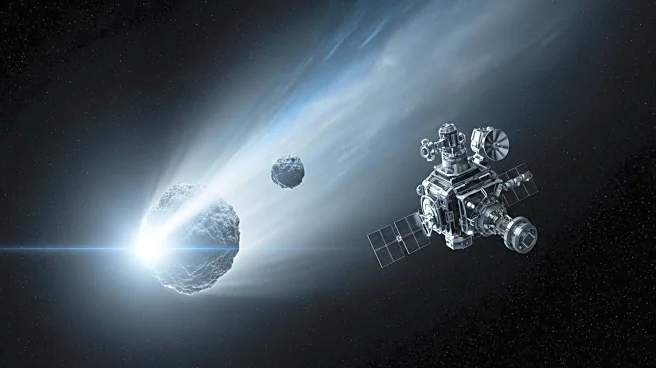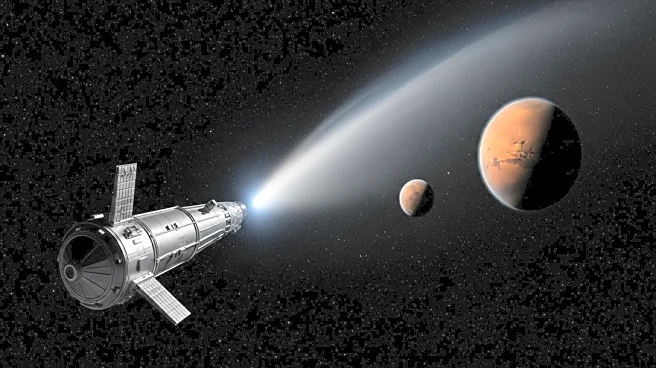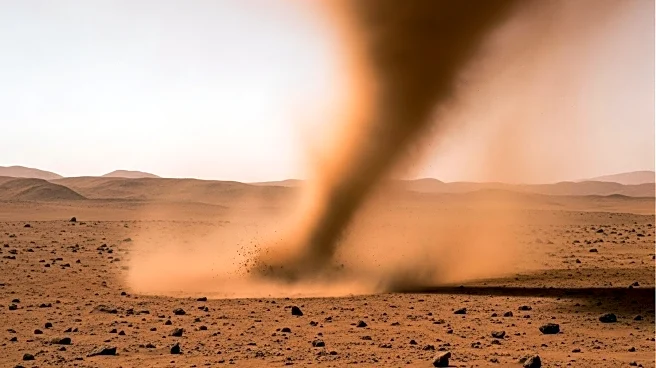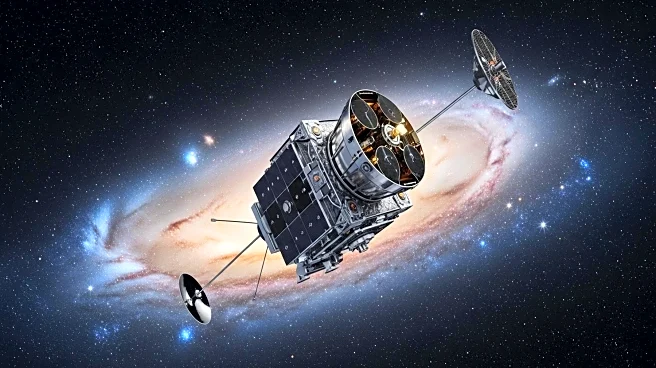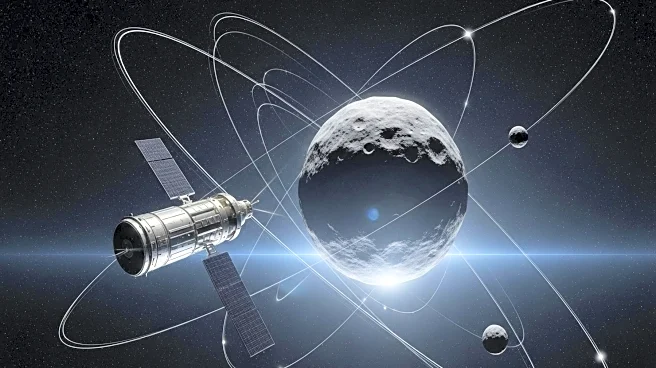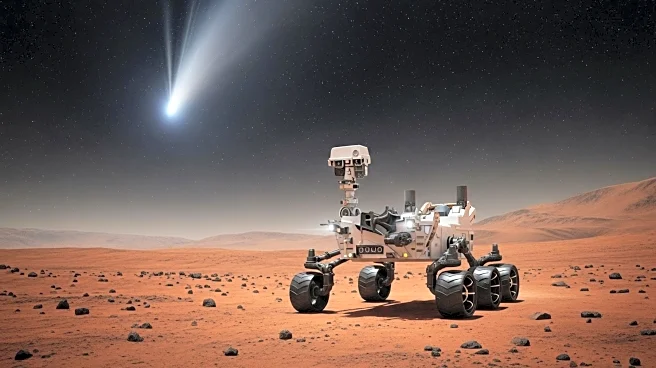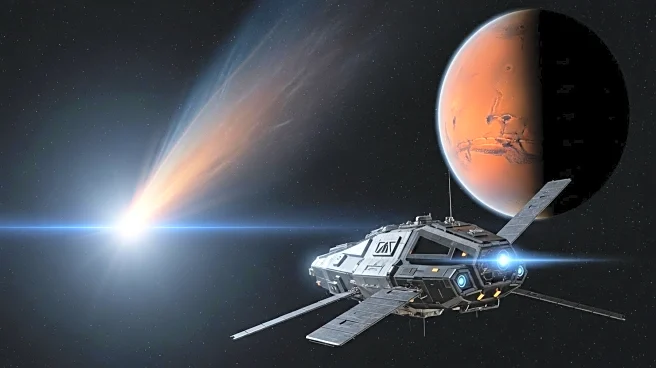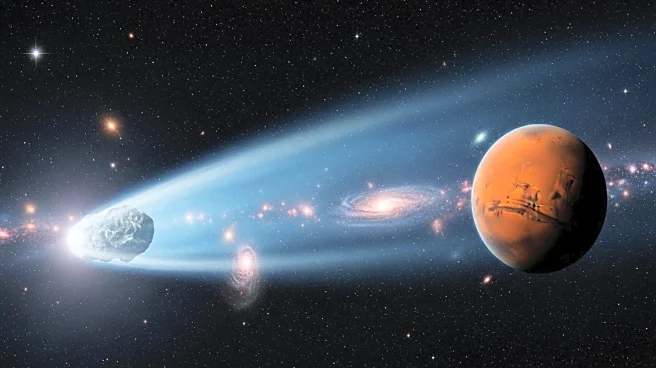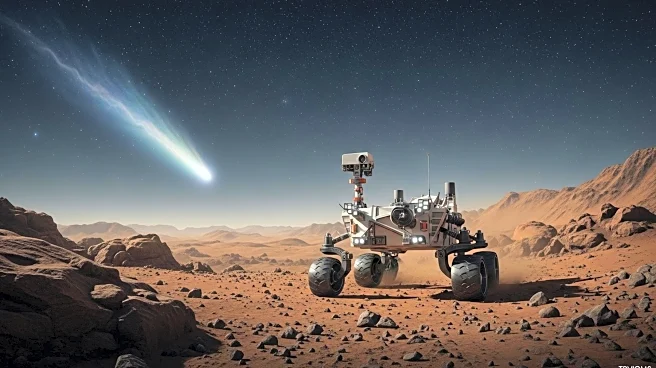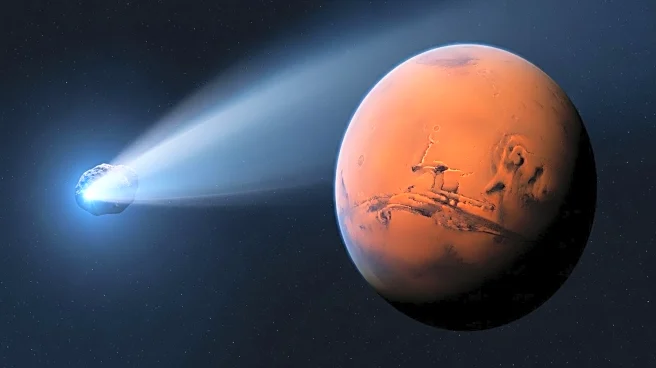What's Happening?
The European Space Agency's Gaia mission has provided new insights into the rotation of asteroids, revealing the factors that influence whether they spin smoothly or tumble chaotically. The findings, presented at the EPSC-DPS2025 Joint Meeting in Helsinki, are based on Gaia's extensive dataset of asteroid rotations. Dr. Wen-Han Zhou from the University of Tokyo explained that the study identified a gap in the rotation period versus diameter graph of asteroids, which divides them into two distinct populations. This gap is attributed to the balance between collisions in the Asteroid Belt and internal friction, which affects the asteroids' spin. The research utilized machine learning to analyze Gaia's asteroid catalogue, confirming the model's predictions about the gap's location. The study also highlights the role of sunlight in influencing asteroid rotation, with tumbling asteroids experiencing weaker effects due to their chaotic motion.
Why It's Important?
Understanding asteroid rotation is crucial for developing strategies to deflect potentially hazardous asteroids. The study's findings suggest that many asteroids are loosely held together rubble piles, which would react differently to kinetic impacts compared to solid bodies. This knowledge is vital for missions like NASA's DART, which aim to alter the trajectory of asteroids on a collision course with Earth. By refining the understanding of asteroid interiors, astronomers can better predict how these bodies will respond to deflection attempts. The research also sets the stage for future surveys, such as the Vera C. Rubin Observatory's Legacy Survey of Space and Time, which will expand the dataset and enhance the understanding of asteroid evolution.
What's Next?
The findings from the Gaia mission will inform future asteroid deflection strategies, particularly for missions targeting rubble pile asteroids. As forthcoming surveys like the LSST are conducted, the methodology developed in this study will be applied to millions more asteroids, providing a comprehensive catalogue of their internal structures. This will enable more accurate predictions of how asteroids will respond to deflection efforts, improving the effectiveness of planetary defense initiatives. Additionally, the research may lead to new insights into the formation and evolution of asteroids, contributing to the broader understanding of the solar system.
Beyond the Headlines
The study's implications extend beyond planetary defense, offering a deeper understanding of the physical properties of asteroids. By revealing the internal structure of these bodies, the research provides clues about the conditions in the early solar system and the processes that shaped it. The findings also underscore the importance of international collaboration in space exploration, as data from missions like Gaia can have far-reaching impacts on scientific knowledge and practical applications. As the study's methodology is applied to more asteroids, it may uncover new patterns and phenomena, further advancing the field of asteroid research.

